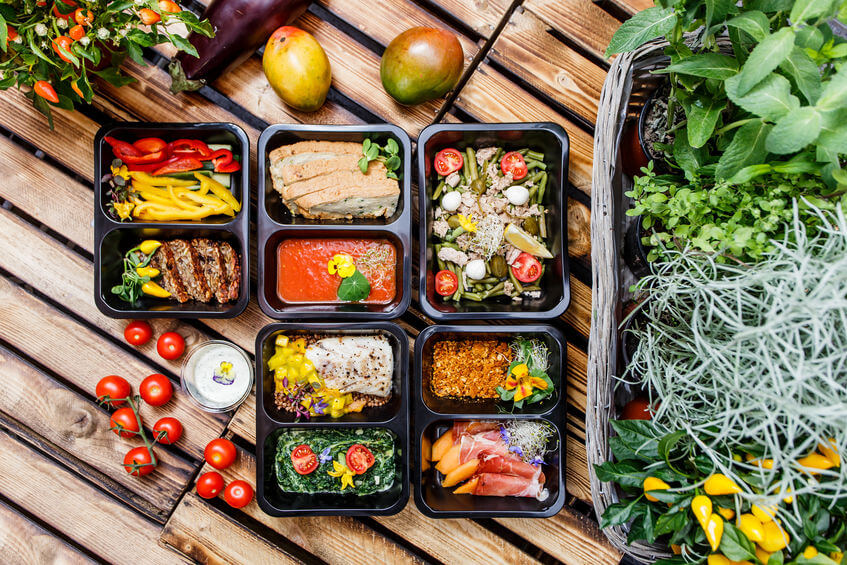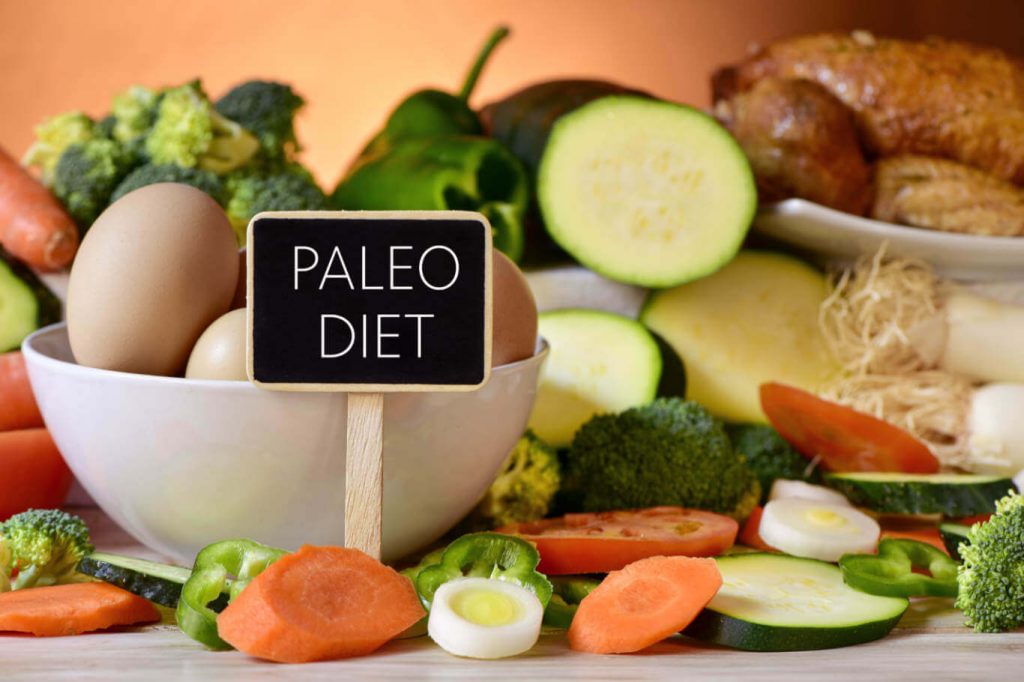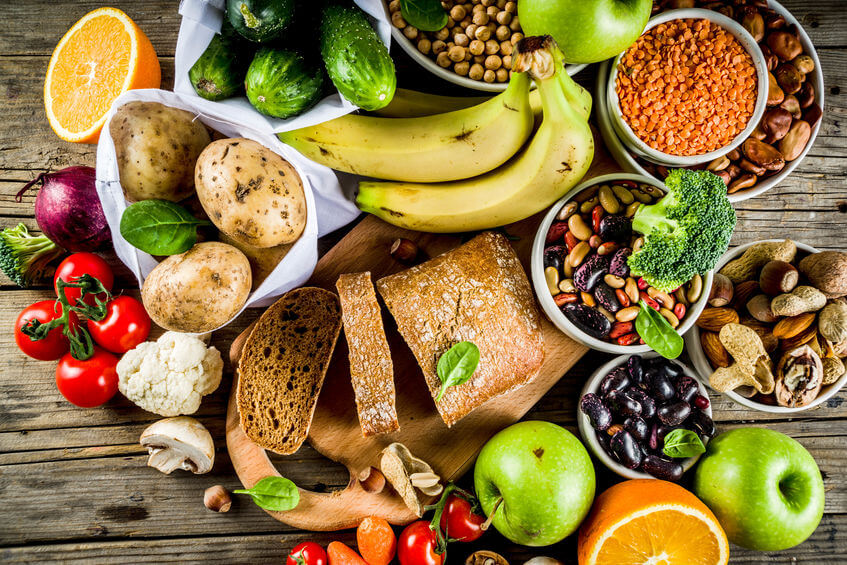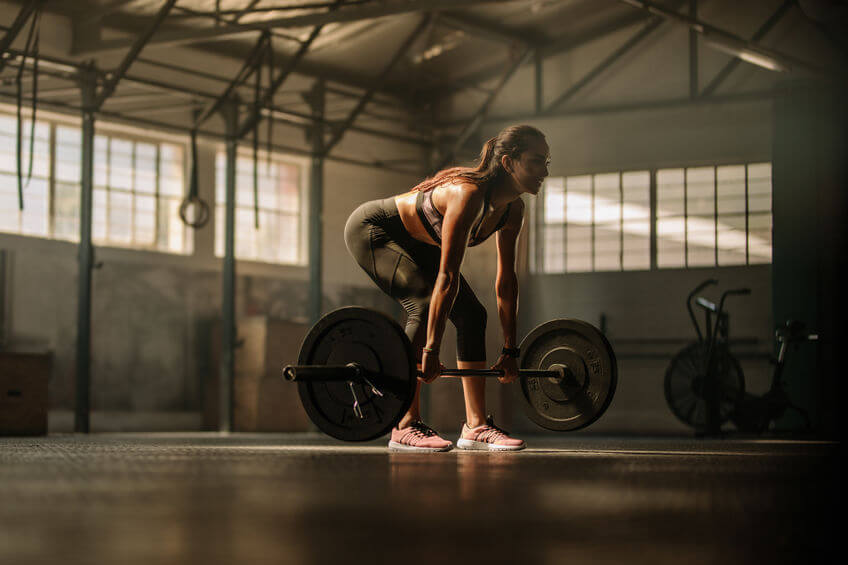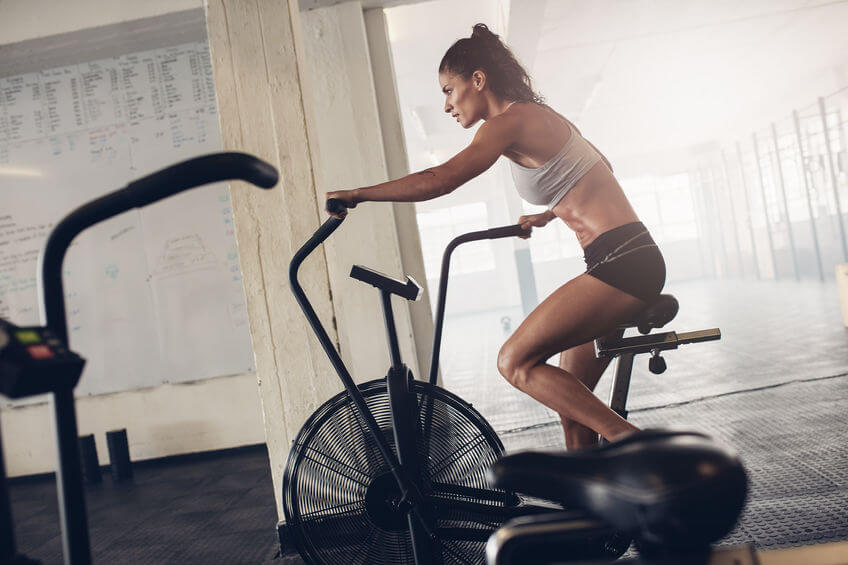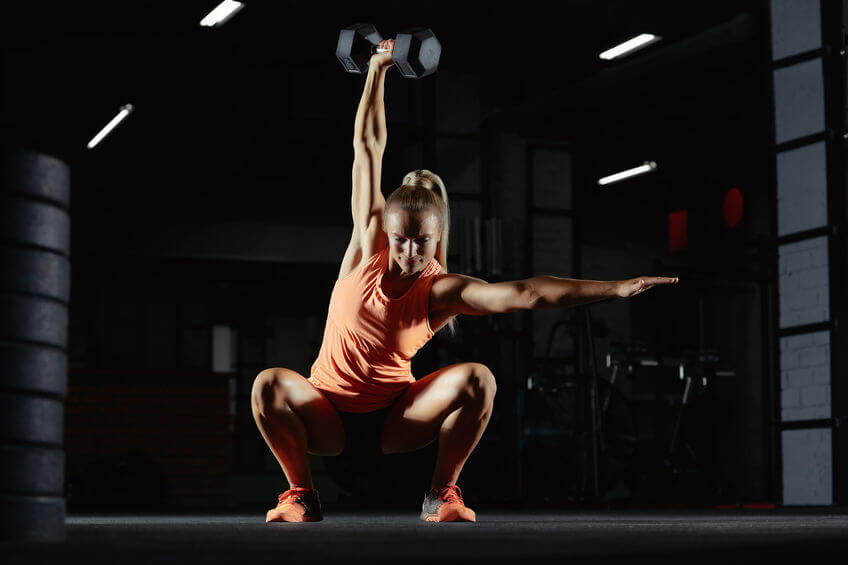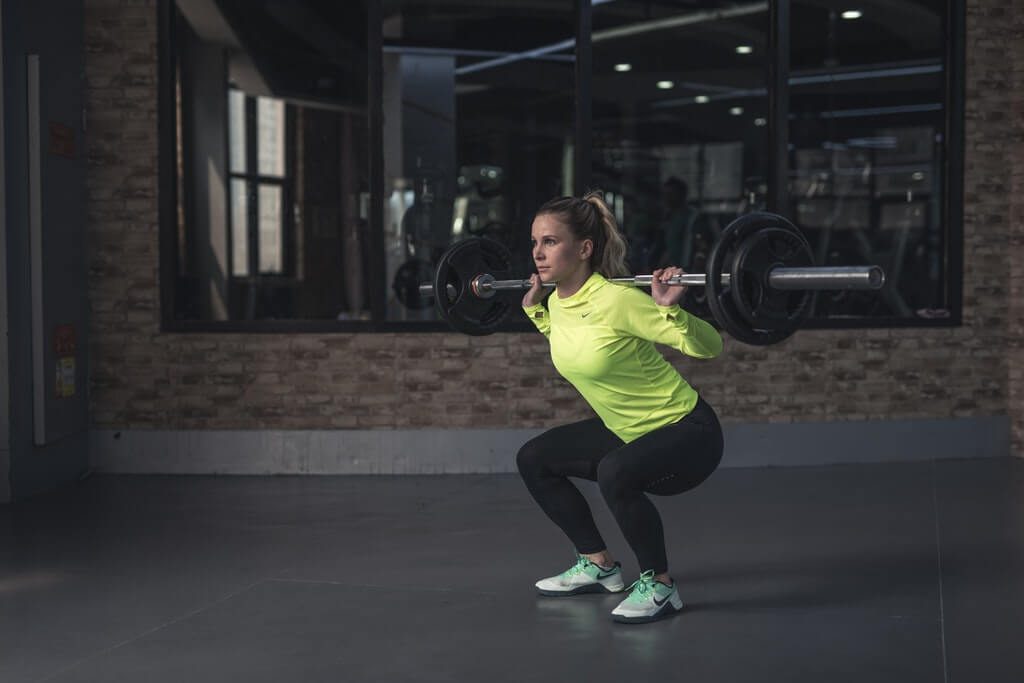Muscle Building for Women 2025 [Complete Guide with Workouts & Nutrition]
So you’re on a mission for lean, strong, sexy muscle.
You’ve come to the right place.
There are a lot of misconceptions about muscle building for women and we’re here today to help clear some of those up. Too many women shy away from building quality lean muscle mass and it’s sad because if there is one thing that will change your body in a hurry, building more lean muscle is it.
There is a science to muscle building for women however and you can’t approach it exactly as a man does. Your body is different so by understanding some of those differences, you can ensure you see the progress you’re after.
In this article, we’ll cover everything you need to know about muscle building for women.
We’ll talk about gym exercise, nutrition, a few lifestyle factors that come into play and also a few notes on how your monthly cycle impacts the results you see.
After reading this, you should feel confident you are on your way to changing your body for the better.
Let’s get started.
Contents
Nutrition For Muscle Building For Women
It may seem odd to start with nutrition in a discussion about the best way for women to build muscle but if the truth is told, nutrition is the key factor that needs to be addressed here.
Consider this.
If you were trying to build a new sunroom to your house so you could get that golden tan in the summer without having to worry about those pesky bugs, would you be successful if you didn’t buy any building materials?
Clearly not. You probably think that’s a joke question. How could you build a sunroom without the materials to build it?
Exactly. How will you build muscle successfully without the materials to build it?
Building Muscle Requires Food and Calories
So many women have it drilled into their heads they need to reduce their calorie intake thanks to the fact we live in a world where dieting is so common-place that they never eat enough to see results.
If you’re someone who’s set on eating no more than 1200 calories per day, you might as well stop reading right now as unfortunately, you won’t have much success with your quest to build muscle.
You need fuel to make this happen.
How much?
It will vary based on the woman. The best way to figure this out is to know your total daily energy requirements. Even this does vary from day to day depending on how active you are, but generally speaking, it’s fairly consistent for most people.
If you don’t have any clue how to figure this out, here’s an easy formula.
Resting energy requirement: Bodyweight in pounds X 10
Activity Multiplier:
- Desk Job = 1.2
- Desk Job + 1-3 workouts per week = 1.35
- Desk Job + 4-5 workouts per week = 1.5
- Active Job + 1-3 workouts per week = 1.6
- Active Job + 4-5 workouts per week = 1.75
Type in the number you get from the first part (bodyweight times ten) into the activity multiplier and this will give you a pretty good estimate of how many calories you need each day to maintain your body weight.
Or, the other option is to simply track your calories for 3-4 days (making sure to track over at least one weekend day) and see what number you come up with.
If you’re actively maintaining your body weight, that’s your current calorie requirement.
Now you need to add your calorie surplus to this, which is the extra energy that will be put towards building muscle.
To help avoid fat gain, 250-350 is a good number per day. While some women may bump this up to 500 calories per day, do realize that you may put on a bit more fat with that muscle doing so.
As a woman with less testosterone than a man, you will build muscle slower than he does, therefore, you don’t need to eat quite as much extra energy, as what isn’t used up gets converted to body fat.
You might be thinking, “Well why not just eat 100 calories extra instead and avoid all fat gain?!”
You could try that… but realize the process will be so incredibly slow and there is a chance your metabolism may just speed up to accommodate to that increase in food.
Therefore, no results would be seen. Plus, due to inaccuracies in measuring from time to time, you may not even be 100 calories over some days like you think.
250-350 calories above maintenance is a happy middle that will produce good results for most females and this will allow them to gain around 1-2 lbs. of lean muscle mass per month, which is a safe estimate of what most women can achieve.
Remember, because females don’t have as much testosterone as men do, they won’t build muscle nearly as quickly.
Macros
Next, you need to consider your macros.
The term ‘macros’ is a buzzword right now in the fitness industry with so many women looking at this element of their diet plan.
It refers to how many grams of protein, fats, and carbohydrates you eat. Each of these plays a different role in the body and your progress so it is important to get these right.
Protein
Protein provides the building blocks new muscle tissue is made from, so it must be in the picture. You won’t build muscle without eating enough protein – period.
This said, how much protein you need is far less than many people think. Women, in general, tend to not eat enough protein, so it may feel like a lot to you when you first start eating accurate requirements.
A good place to start is with one gram of protein per pound of body weight. Unless you have significant weight to lose (say 50+ lbs.), this will be an accurate representation of how much your body needs a day to optimize performance, recovery, and the process of muscle building.
Do keep in mind this is more than the average sedentary non-exercising woman needs, but we are looking to optimize your results.
Could you get away with less? You may, but if results are better with a bit more, go for it.
Once you start seeking out protein-rich foods, eating 1 gram/lb. per day won’t feel like too much.
A good option for getting your protein intake up include:
- Chicken breast
- Turkey breast
- Ground chicken/turkey
- Lean sirloin steak (this is especially important to eat around your period since you’ll lose some critical iron in the bloodstream)
- Egg whites and whole eggs
- Fish and seafood
- Low fat, plain Greek Yogurt
- Whey protein powder
While there are also foods like beans and lentils that provide protein as well, keep in mind they also provide a higher amount of carbs.
This doesn’t mean you can’t eat them, but you also need to factor the carbs they (beans and lentils) contain into your menu.
Protein should be eaten at every snack and meal and you should aim for no less than 10 grams of protein per snack and 15-20 per meal.
Most women will see the best results getting 15-20 grams of protein with each snack and 25-30 grams of protein with each meal.
Carbohydrates
Next, you have carbohydrates. There is a lot of fear of carbs going around right now which is unfortunate because to be successful in muscle building for women, you need carbs.
Think of carbs as supplying the energy to build that new sunroom with. You can gather all the materials but if you have no manpower, you aren’t getting very far either.
Your carbohydrate intake will depend on how active you are. The more active you are on a day to day basis (and the more intense workouts you complete), the more carbohydrates you are going to require.
Carbohydrates vary considerably with regards to their impact on the body, so you’ll want to think hard about the type you are eating as well.
For example, your body is going to react a lot different to taking in something like a slice of chocolate cake with icing than it is some sweet potatoes and broccoli. This is what will make or break your plan and what will dictate whether you’re likely to gain body fat or remain lean.
The three main types of carbohydrates to focus on include:
- Complex carbohydrates
- Fibrous carbohydrates
- Simple carbohydrates
Complex carbohydrates will include all the whole grains that you may eat. Pasta, rice, sweet potatoes, beans, lentils, and Ezekiel bread, for instance, are all complex carbs. These will supply the bulk of your energy and are best eaten around the period in the day when you’re most active.
Fibrous carbohydrates are your vegetables. These have hardly any calories and are filled with a wealth of nutrition. You should be eating as many of these each day as you possibly can.
They’ll fill you up, stabilize blood pressure, and help keep hunger in check. Even though you are eating a higher calorie diet right now, some women have an insatiable hunger and you do still need to ensure you aren’t overdoing your calorie intake.
Finally, simple carbohydrates are those that spike blood glucose levels and what you want to avoid for the most part. Think cakes, cookies, pastries, sugary cereals, granola, and so on. Most people have a pretty clear understanding of what simple sugars are.
The only time you do want to consider eating these is around the workout period, especially after. They can then be used to spike blood glucose levels and will help kick-start the recovery process.
Fruit is typically considered a simple sugar, but be aware it also comes with a good amount of dietary fiber as well so it won’t impact blood sugar as much as say a bag of Skittles would.
How many carbs you eat isn’t set in stone but rather something you’ll need to figure out.
It’d be a good idea to consume at least 100 grams of carbs per day on non-training days and 150 grams per day on training days, however, some women who are more active may need to go up to 200-250 grams per day.
Remember there are 4 calories in proteins and carbs and 9 calories in fats, so once you figure out how many calories represent your protein intake (since that number is determined), you can then see how many calories you have to put towards fats and carbs in your plan. The more fats you eat, the fewer carbs and vise versa.
Dietary Fats
Which now brings us to dietary fats, the last element in setting up your muscle-building diet plan.
Fats should not be feared either as they can be a great long-term source of energy, they help stabilize blood glucose levels, and they’re important for keeping your hormones in check as well.
Because fats are more calorie-dense, it’s definitely possible to gain weight consuming them easier than if you were to eat protein or carbohydrates. This said, if you monitor your serving sizes, there should be no reason you are gaining weight when having them.
Just like with carbohydrates, the type of fat you eat matters. You want to stay away from saturated fat for the most part and instead, choose unsaturated and omega-3 fatty acids.
These fats can help improve insulin sensitivity, which then helps ensure the carbohydrates you eat do go towards building muscle rather than getting converted into body fat.
Dietary fats take a longer time to digest, so you’re better off eating those at times when you aren’t planning an intense workout. Around the workout period (before and after), keep your total fat intake as low as possible for optimal results.
Good source of fat to eat include:
- Olive oil
- Avocados
- Nuts and seeds
- Nut butter
- Fatty varieties of fish
- Coconut oil
Aim to eat about 5-10 grams of fat per meal to help promote control over hunger throughout the day and stable blood glucose levels.
Again, there is no set number for how many grams of fat you should eat each day and it will heavily depend on your activity level and how many carbohydrates you’re consuming.
Some people may choose to eat more fats and fewer carbs while others do the opposite. Consider your personal preferences when making this decision.
As long as your calorie intake adds up, that’s the main thing that needs to be in place.
This now covers the basics of nutrition for muscle building for women meal plan.
Don’t get too caught up in meal timing or frequency as neither of these matters all that much. As long as you’re eating fairly regularly throughout the day and eating a mix of nutrients for each meal, you’ll be on your way to seeing good results.
Exercise To Build Muscle
While the nutrition section was quite long in this guide to building muscle, this is because it reflects the importance of it.
Exercise is also critical, but do realize that without good nutrition, all the exercise in the world won’t help you build muscle.
With the nutrition in place though, your exercise will help sculpt your physique and get you the results you’re looking for.
There are three main types of exercise you can do in the gym or at home:
- Resistance training/weight lifting
- Cardio training
- Flexibility training
Chances are you already know which one is the best way for women to build muscle, but that doesn’t mean the other two can’t be included.
Flexibility training should always be part of a good workout routine as it’ll help prevent post-exercise muscle soreness, improve your range of motion (which means better weight lifting performance), and help simply keep your limber for everyday activities.
Cardio training when aiming to build muscle gets a lot of mixed viewpoints.
Some people believe you should stop cardio training entirely because it will only interfere with the results you see. Others believe it can be done but should only be done in moderation.
What’s the verdict?
Without a doubt, too much cardio will make it harder to build muscle successfully. Cardio training will cut into your recovery abilities, your time availability to do weight lifting, and it also sends the opposite message to the body that you’re trying to send.
Cardio does tend to be catabolic in nature while muscle building is anabolic (after recovery has taken place), so they are opposite processes.
This being said, you need to do quite a high amount of cardio training to see negative impacts taking place.
Cardio Recommends For Building Muscle
The benefits cardio can offer when on a muscle-building plan are that it helps keep you in good cardiovascular shape, which means there’s a lower chance you’ll get winded when doing strength-based movements.
For example, if you do a set of heavy walking lunges, you’ll quickly see what kind of cardiovascular shape you’re really in.
Second, cardio does help keep the fat-burning pathways open. This just means that it does help your body keep oxidizing fat as fuel and this may help you stay a bit leaner when you’re in a calorie deficit.
Do not let yourself think however that cardio is going to burn fat while you’re focusing on muscle building. Because your calorie intake is over maintenance level, fat burning is highly unlikely.
Instead, the cardio simply helps maximize your rate of lean muscle to fat gain. Meaning, of the weight you do gain, more is muscle and less is fat.
Finally, cardio can help increase your appetite. If you’re someone who simply has a hard time getting sufficient calories in, cardio can lead to an increase in hunger, making sure you don’t fall short.
So all in all, some cardio can be beneficial. Aim for around 2-3 sessions of 15-20 minutes per week of any moderate-paced cardio activity. This should be about the right number for most people.
Resistance Training Activity
As you probably know, if you want to see results with building lean muscle mass, the way to do this is by applying an overloading stimulus.
This overloading stimulus is what triggers the muscle growth response, which allows your muscles to then get stronger as well as larger over time if sufficient calories are then provided.
That is where the nutrition element comes into place. If you aren’t eating enough calories, you might find that you get stronger but you may not necessarily develop muscle size.
When going about resistance training exercise for your muscle building for women program, there are a few things to know and keep in mind. Let’s look at the key points.
Progressive Overload
The first thing to know is that progressive overload must be in place. In other words, if your workouts feel easy, they probably aren’t so effective. Make sure you are pushing yourself hard.
You likely won’t add weight to the bar every single gym session you do, but you should be continually increasing the challenge.
This can be done by doing more sets, reps, using fewer rest periods, or doing harder exercises.
Exercise Selection
Speaking of exercises, when choosing your exercises, you’ll see optimal results by using compound exercises. These are movements that work multiple muscle groups at once and allow you to lift more weight overall.
While you might get a nice ‘ muscle pump’ as it’s called from doing bicep curls and leg extensions, these simply aren’t as effective for building muscle as squats or rows are.
Good exercises to include would be:
- Squats
- Deadlifts
- Walking lunges
- Leg presses
- Split squats
- Barbell bent-over rows
- Dumbbell bent-over rows
- Barbell shoulder presses
- Dumbbell shoulder presses
- Bench press
- Dumbbell press
- Incline press
- Pull-ups
The more often you include these, the faster you’ll see progress.
This doesn’t mean you can’t use isolation exercises such as bicep curls or tricep extensions but they should be done more as an afterthought once those key moves are in place.
Exercise Frequency
How often you train each muscle group will also influence the results you see. Most women will see the best results hitting a muscle group 2-3 times per week, allowing for at least one day of rest between working out a muscle group.
This means doing a full-body workout routine or an upper/lower split if you prefer. That’ll have in you in the gym 3-4 days per week, which is realistic for most.
While you could bump that up to five days per week, unless you are more advanced and have good recovery abilities, there really is not a whole lot of benefits to doing so.
Remember, your body gets stronger and builds muscles while you are resting.
There are many different ways to go setting up a workout program so don’t feel like you’re chained to just one program.
In fact, changing things around often is key for results. If you start doing the same workout over and over again, your body will simply adapt and you’ll stop seeing the results you desire.
Therefore, mix it up. It’ll also keep you from becoming bored.
Let’s give you a quick sample workout to illustrate how you might set things up.
Monday
| Exercise | Reps | Sets | Rest |
| Bench Press | 8 | 3 | 90 seconds |
| Seated Rows | 8 | 3 | 90 seconds |
| Lat Pull Down | 8 | 3 | 90 seconds |
| Seated Shoulder Press | 10 | 3 | 90 seconds |
| Bicep Curls | 12 | 2 | 45 seconds |
| Tricep Extensions | 12 | 2 | 45 seconds |
| Face Pulls | 12 | 2 | 45 seconds |
Tuesday
| Exercise | Reps | Sets | Rest |
| Barbell Back Squats | 8 | 3 | 120 seconds |
| Leg Press | 10 | 3 | 60 seconds |
| Walking Lunges | 12 | 3 | 60 seconds |
| Leg Extensions | 15 | 2 | 60 seconds |
| Hamstring Curls | 15 | 2 | 60 seconds |
| Plank Hold | 60 seconds | 2 | 30 seconds |
Wednesday
Off/Cardio
Thursday
| Exercise | Reps | Sets | Rest |
| Barbell Bent Over Row | 8 | 3 | 90 seconds |
| Seated Chest Press | 8 | 3 | 90 seconds |
| Standing Barbell Overhead Press | 10 | 3 | 90 seconds |
| Assisted Pull-Ups | 10 | 3 | 90 seconds |
| Front Raise | 12 | 2 | 45 seconds |
| Side Raise | 12 | 2 | 45 seconds |
| Reverse Fly’s | 12 | 2 | 45 seconds |
Friday
| Exercise | Reps | Sets | Rest |
| Deadlifts | 8 | 3 | 120 seconds |
| Split Squats | 10 | 3 | 120 seconds |
| Barbell Sumo Squats | 10 | 3 | 90 seconds |
| Leg Extension | 12 | 2 | 60 seconds |
| Hamstring Curl | 12 | 2 | 60 seconds |
| Glute Bridge | 12 | 2 | 45 seconds |
Saturday
Off/Cardio
Sunday
Off
Best Muscle Building Supplements For Women
Many women are scared off by supplements when it comes to muscle building because they feel they are going to cause them to get big and bulky.
This is not typically the case, however.
The good news though is that you generally don’t need that many supplements to see great results. In fact, sometimes a more simplistic approach is really better.
Some of the supplements you will want to take however include the following:
Fish Oil
Fish oil helps boost insulin sensitivity, which means it’s more likely the carbohydrates you work towards building lean muscle versus adding body fat.
Omega-3 fatty acids are also critical for overall health and will help to speed up your exercise recovery as well.
Protein Powder
Protein powder is a must for most women looking to build muscle. Many simply do not get sufficient protein in their diet without it, so by adding it in, you can ensure you’re covered.
Aim for one that’s a whey isolate so it’s digested as quickly as possible post-workout.
Multi-Vitamin
A good quality multi-vitamin is always a good idea. Multi-vitamins are important for helping to provide the minerals and vitamins you may miss out on if you aren’t eating as much food variety as you should be.
This is important not just for promoting good health but for maximizing performance as well. Certain vitamins – such as iron, for instance, can lead to increased levels of fatigue during exercise.
It’s simply a back-up reassurance that you’re covered.
Creatine
Creatine is an optional supplement for women but can be highly beneficial when used. It’ll help you delay fatigue build-up during exercise so you can push harder and do more work in every workout.
This being said, be aware that most people will retain a bit of water while using it, so be prepared to see the scale increase when you first start it. As long as you’re okay with that, then you won’t have to worry.
Creatine should be taken before or after the workout session and you’ll typically do a 5-day loading cycle of 10-20 grams per day and then use a maintenance dose of 5 grams per day after that.
Pre-Workout
Finally, you may also choose to use a pre-workout supplement for women as well. These are designed to give you an extra edge during your training session often by boosting energy levels, improving focus and concentration, speeding recovery, and helping you get more blood and oxygen to the muscle cells.
Remember, no supplement is going to make up for not exercising hard or eating right, so be sure that those are in place first and foremost.
Conclusion
So there you have your complete guide to reshaping your body and building more lean muscle mass tissue.
When you train hard, eat smart, and rest up, you will be amazed at the results you see. By building lean muscle, you have the power to create a totally new look – to capture that transformation.
Women who simply just focus on losing fat rarely see a significant difference in results but women who take this approach are led to results that are far more dramatic.
[starbox id=shannonclarkwriter]

